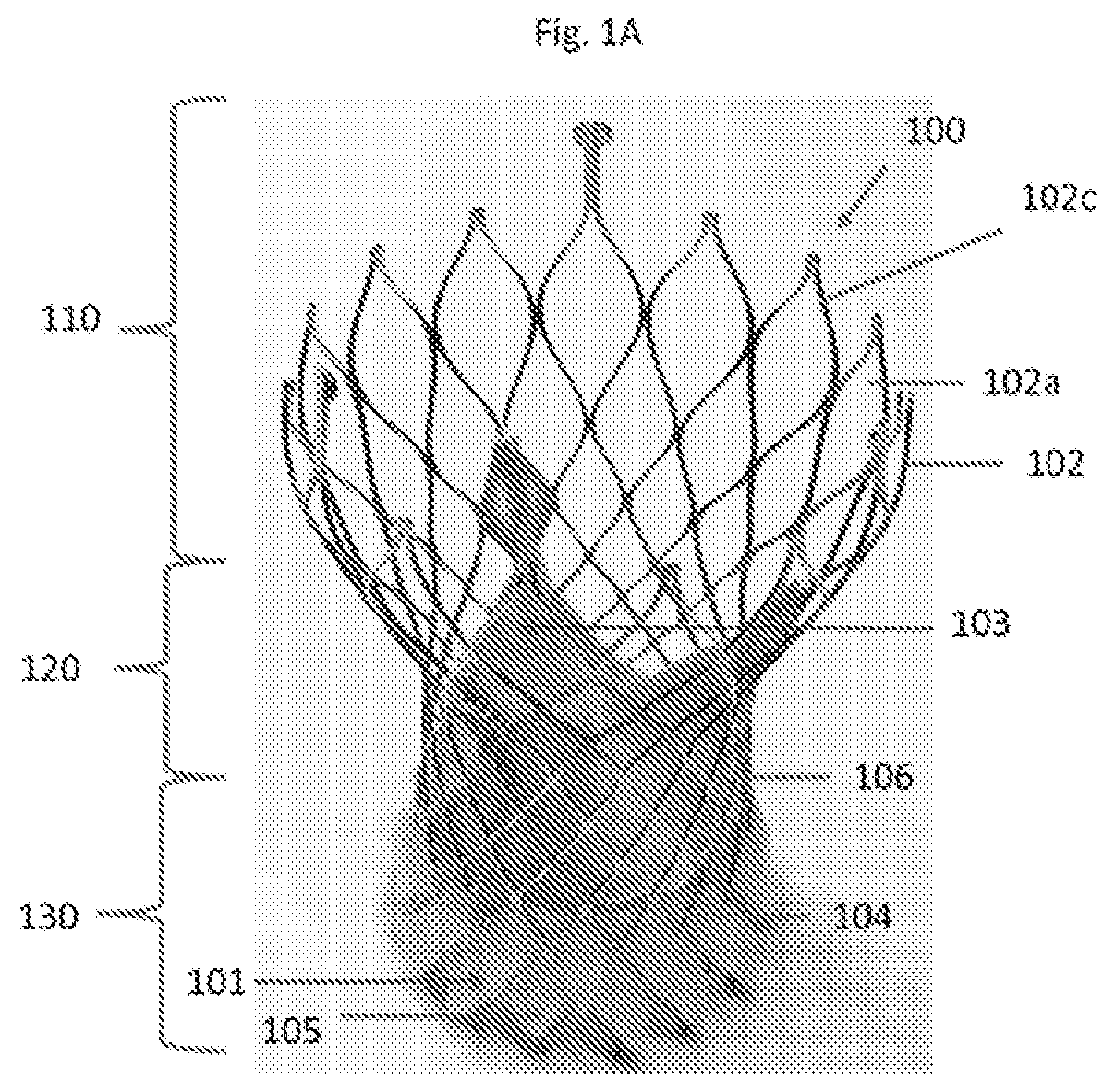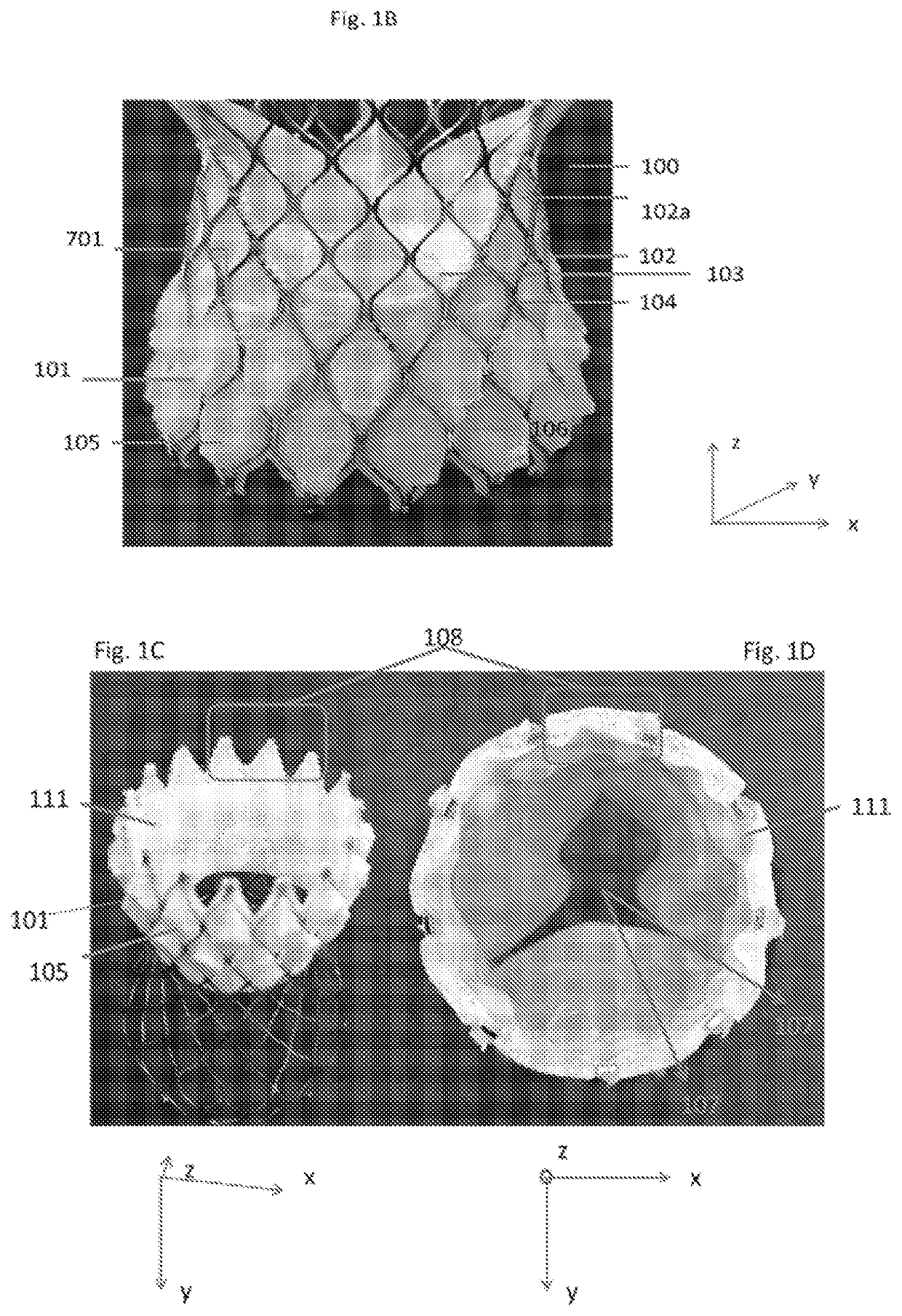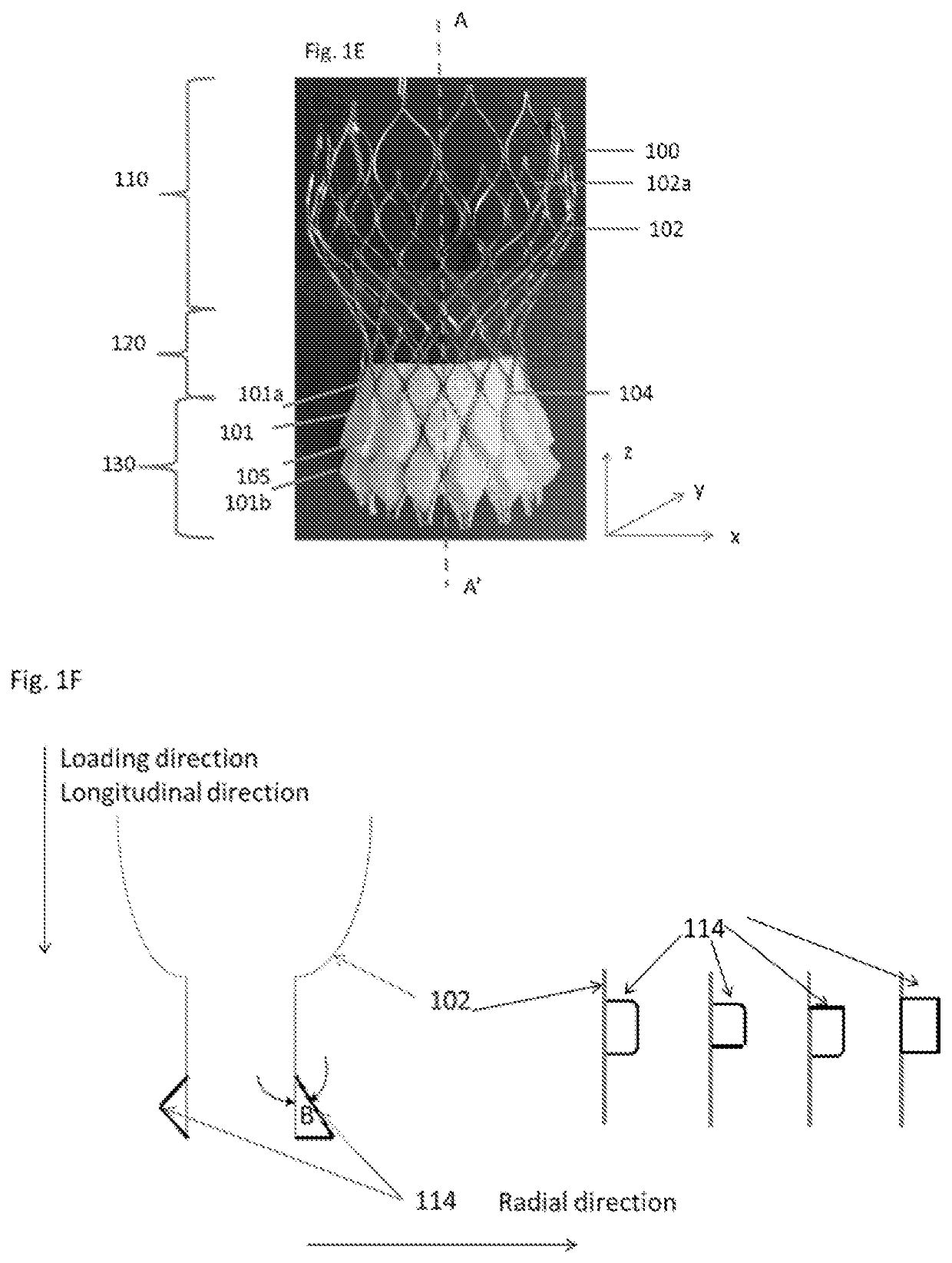Expandable sealing skirt technology for leak-proof endovascular prostheses
- Summary
- Abstract
- Description
- Claims
- Application Information
AI Technical Summary
Benefits of technology
Problems solved by technology
Method used
Image
Examples
example 1
Foam Casting Procedure Using DMSO
[0194]DSM Carbosil 80A and 55D Pellets are stored in a desiccator at approximately room temperature, at moisture content ranging from of 30-33%. Silica gel beads are used to absorb the moisture in a desiccant cabinet.
[0195]Polymer solutions are made by dissolving polyurethane (PU) pellets in DMSO with around 5-25% TDS. The pellets were dissolved by adding solvent on top of pellets in a Pyrex bottle with Teflon cap stirring on a magnetic stirrer at room temperature. Depending on the polymer concentration, complete dissolution takes 20-80 hours.
[0196]A mother mold of a pattern of protruding cells reflecting one or more of the layers of stent frame cells in their expanded configuration at or distal to the constriction region (region that includes the valve attached to the stent frame and is configured to be delivered to the native valve annulus) of a transcatheter valve bioprosthesis(alternatively called a stent frame and valve attached thereto) to be c...
example 2
Foam Casting Procedure Using DMSO Including Use of PET Mesh
[0202]In some embodiments wherein the protruding region is used as a transcatheter heart valve skirt, the use of a PET mesh as the non-protruding region is included in the casting process. Following the addition of salt to the polymer solution in the mold as outlined in Example 1, PET mesh is cut to a size that is at least as large as the mold of the protruding region and then it is preheated in oven at 50-100° C. for at least half an hour. The PET mesh is placed on top of the mold (FIG. 9) and the mold / PET mesh sample is heated at 30-90° C. for up to an hour. The sample is removed from oven / vacuum oven and sunk in hot tap water in order to wash out the DMSO. Washing also leaches out the salt so that the remaining polymer material forms the scaffold of the foam. Upon removal of the salt crystals, what remains is the hardened polymer foam with the PET mesh attached to the foam surface, optionally permanently. The PET mesh the...
example 3
Foam Casting Procedure Using THF
[0203]DSM Carbosil 80A and 55D Pellets are stored in a desiccator at approximately room temperature, at moisture content ranging from of 30-33%. Silica gel beads are used to absorb the moisture in a desiccant cabinet.
[0204]Two polymer solutions are made by dissolving polyurethane (PU) pellets in THF; a higher concentration solution in the range of 8-15% (w / v) and a lower concentration solution in the range of 0.5-6% (w / v). The pellets were dissolved by adding solvent on top of pellets in a Pyrex bottle with Teflon cap stirring on a magnetic stirrer at room temperature.
[0205]A mother mold of a pattern of protruding cells reflecting one or more of the layers of stent frame cells in their expanded configuration at or distal to the constriction region (region that includes the valve attached to the stent frame and is configured to be delivered to the native valve annulus) of a transcatheter valve bioprosthesis (alternatively called a stent frame and valve...
PUM
 Login to View More
Login to View More Abstract
Description
Claims
Application Information
 Login to View More
Login to View More - R&D
- Intellectual Property
- Life Sciences
- Materials
- Tech Scout
- Unparalleled Data Quality
- Higher Quality Content
- 60% Fewer Hallucinations
Browse by: Latest US Patents, China's latest patents, Technical Efficacy Thesaurus, Application Domain, Technology Topic, Popular Technical Reports.
© 2025 PatSnap. All rights reserved.Legal|Privacy policy|Modern Slavery Act Transparency Statement|Sitemap|About US| Contact US: help@patsnap.com



